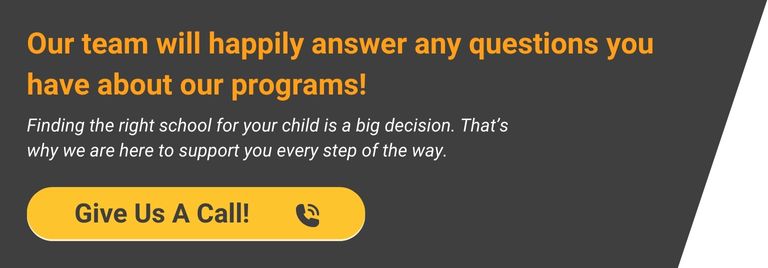When you know your child needs more help at school, figuring out what to do next can feel like a big task, especially if you’re new to the special education system.
But don’t worry – the referral process for special education is simpler than you may think, and it’s designed to make sure your child gets the services and support they need and deserve.
In the U.S., students with learning differences or disabilities have the right to an education that meets their needs, whether that’s extra support in a public school, or a more specialized setting like EA Schools.
Understanding how the referral process works, what your options are, and how to speak up for your child is the first step forward. And remember, there are plenty of people ready to help you every step of the way.
What special education services are available in Ohio?
Special education isn’t a one-size-fits-all service.
It refers to a wide range of services and supports that are designed to help children with disabilities or learning differences to learn and thrive – in the way that suits them.
For example, special education services can include:
- Getting extra help while staying in their regular classroom
- Spending part of the day working with a specialist teacher
- Speech, occupational, or physical therapy
- Other accommodations, like extra time on tests or assistive technology
- Attending a specialized school – like EA Schools – that provides more structure and support than a traditional classroom can offer
In the USA, by law, all children have the right to an “appropriate” education for their needs, that is also within the “least restrictive environment” possible. This means your child has the right to learn in the setting that helps them make progress – whether that’s in a general education classroom, a special class, or a specialized school program.
To make sure students get what they need, there are clear processes in place – and it all starts with a referral for an evaluation in special education.
How does the special ed referral process work?
Whether your child’s teacher notices signs that more help is needed, or you do, the special ed referral process almost always begins at your child’s current school.
Thanks to Child Find – part of the Individuals with Disabilities Education Act (IDEA) – schools in the U.S. have a legal obligation to actively identify children (up to age 21) who might need special education, and initiate the process of evaluation.
But parents don’t have to wait for the school to act. If you have concerns, you have every right to request a special education evaluation yourself.
In short, the first step in the special ed referral process is for your child to be formally evaluated. This can be initiated by you (the parent) or by the school, but a parent or guardian must always be involved and give written permission.
What is the referral process for special education?
We’ll cover most points in more detail further below, but here’s a short summary of the whole special education referral process:
- Concern is identified
A teacher, counselor, or you, the parent, notices your child is struggling in ways that may point to a learning difference, disability, or other barrier to learning.
- A request for evaluation in special education
A Full Individual Evaluation (FIE) must be requested in writing. This can be done by you (the parent or guardian) or by the school, but your written permission is required before any testing can begin.
- The evaluation is conducted
A full evaluation is carried out by a team of professionals within the school setting. It takes a detailed look at your child’s strengths and challenges, and can include:
- Tests for learning, speech, or cognitive skills
- Observations in class
- Interviews with you and your child’s teachers
- Reviews of work samples and grades
The goal is to see if your child has a disability covered under IDEA.
- Eligibility is determined
If the evaluation shows your child has a qualifying disability that impacts their learning, they’ll get an Individualized Education Program (IEP) – a legal plan created by a team (that includes you) and outlines the exact supports and services your child will receive.
- Referral to a specialized setting (if applicable)
If your child’s IEP identifies that they need more support than their current school can provide, an alternative placement (like EA Schools) will be recommended, and the district will handle the referral.
Special education eligibility process and what happens next?
Eligibility for special education is determined by a team of teachers, specialists, and you as the parent, using the results of your child’s evaluation.
For a student to qualify for special education:
- They must have a disability that fits under one or more of the 13 categories listed under IDEA (like a learning disability, ADHD, autism, or speech impairment).
- The disability must impact their ability to succeed in a general education classroom without special support.
If your child does not qualify, they may still be able to get help through a 504 Plan, which provides classroom accommodations but is not part of special education services. If you disagree with the decision, you can also ask for an Independent Educational Evaluation (IEE) or seek a private assessment for another opinion.
If your child does qualify, the team will create an Individualized Education Program (IEP). This plan explains exactly what services your child will get, how often, and where. This is known as IEP placement, and it ensures your child learns in the best environment for their needs – whether that’s extra help in their current school or an alternative specialized setting like EA Schools.
If all IEP requirements can be met by your child’s existing school, no further referrals are needed – the school will provide everything outlined in the IEP moving forward.
However, if a specialized setting is recommended, the district will refer your child to the best placement – such as EA Schools – which then becomes responsible for delivering your child’s education and services as outlined. IEPs are legal documents, reviewed yearly, and all services must be provided.

School district referrals vs. parent enrollment for specialized schools
A school district referral to an alternative education school like EA – as outlined above – is often the most straightforward way to get your child enrolled at a specialized school.
But it’s not the only way.
Plus, sometimes you might want something different to what is being offered by the district, and wonder if you have a say. The good news is: parents do have a voice.
Here’s what you need to know about how school district referrals work – and how parent enrollment through a scholarship can be another option:
School district referral:
If your child’s IEP states that they require an alternative placement, the district is responsible for arranging that placement and covering the cost. Parents can suggest a specific school – like EA Schools – for the IEP team to consider. As long as the placement meets your child’s documented needs, there’s usually no reason it should be denied.
Parent enrollment through a scholarship:
Some families prefer to take the lead themselves – especially if they feel the district can’t fully meet their child’s needs, or if they’d like more say in where their child goes.
Ohio’s Jon Peterson Special Needs Scholarship is for students who already have an IEP. It allows parents to choose an approved special education program outside their district and use the scholarship funds to cover tuition and services.
The Autism Scholarship is for students with an autism diagnosis, including those who don’t have an IEP.
Both these scholarships give families more freedom to choose the right fit, get specialized support sooner, or find a program that offers services not available in their public school.
Note: EdChoice scholarships don’t apply here – these are income-based and for students in underperforming schools, not specifically for special education placements.
Your role as a parent: advocating for your child
Parents play a powerful role in their children’s education journey, and that includes every step of the referral process for special education services.
Always remember:
- You have the right to request an evaluation if you suspect a need.
- Your child’s school must explain your rights under IDEA and Child Find.
- You should be included in every step – from testing to meetings to IEP placement decisions.
- It’s a good idea to keep records of everything: emails, reports, and notes from teachers.
- You don’t have to accept the first placement offered – scholarships and other options may be available if you feel your child needs something different.
- Don’t be afraid to ask questions or push for more support if needed.
At EA, we’re always happy to talk to parents about the referral process, enrollment, and how to navigate each step. If you think EA might be the right fit for your child but don’t know where to start, just give us a call – we’re here to help.
Find out if your child is eligible for referral to EA Schools
If you’re wondering whether your child could benefit from a different kind of support, you don’t have to figure it out alone.
If you’re based in Ohio, whether you’re working through a district referral or exploring a scholarship, EA Schools is here to help guide you.
Contact our enrollment team today to learn more about your options – and take the next step toward the education your child deserves. We’re here when you’re ready.
